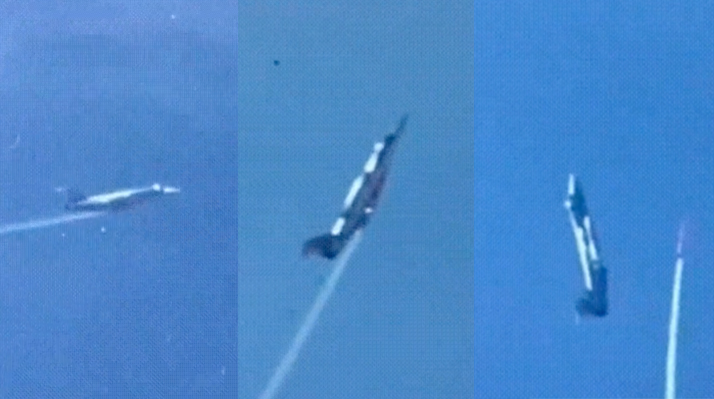Footage shows the tactical nuclear weapon delivery technique used by the F-104 Starfighter (and many other aircraft).
Although some of our readers may already have seen it, I still think the video of a tactical nuclear weapon delivery of an F-104 Starfighter is worth a comment. The vintage clip was probably filmed between the end of the 1950s and the 1960s. It shows a U.S. Air Force F-104C, a variant of the “missile-with-a-man-in-it” flown as a fighter-bomber by the Tactical Air Command.
Unlike the F-104A (used as an interceptor), the “C” model, 77 of those were built, featured an improved fire-control radar (AN/ASG-14T-2) and one centerline pylon that could carry one B28 or B43 nuclear weapon.
The one featured in the video appears to be a B43, a variable yield thermonuclear weapon used by a wide variety of aircraft. Developed from 1955, it entered production in 1959. 2,000 such bombs were produced between 1959 and 1965. There were two B43 variants: Mod. 1 and Mod. 2, each with explosive yields from 70 kilotons to 1 megaton.

Dealing with the delivery method, the one shown in the clip is clearly a so-called “high toss”. Among those designed to drop a nuke, this toss (or Low Altitude Bombing System, LABS) technique saw the aircraft approach the target at low altitude and high speed, to avoid detection from the enemy radars and interception by enemy fighters. At a a distance calculated by the onboard computer (that would take airspeed, altitude, gyroscopic inputs and determine the release point for the desired ballistic path), the aircraft would start a pull-up into a half loop. At 45° (in case of “low toss”) or 90° (in case of “high toss” as in the video) in the steady climb, the weapon, with an upward vector, would be automatically released.
Interestingly, using with LABS, pilots would not trigger the release of the bomb, but his “consent” to release the weapon at the beginning of the climb.
Once released, the bomb would follow a ballistic arc towards the target: the toss technique was not too accurate, but precise enough to destroy the intended target.
Meanwhile, the F-104 would have reached the top of the maneuver, inverted, egressing the area: it would roll to escape at maximum speed the blast of the nuclear detonation.
F-104 Starfighter demonstrating the “toss bombing” technique that allows the aircraft to escape the effects of a nuclear bomb from r/interestingasfuck
The computational models used in the LABS system are now incorporated in the Fire Control Computers of modern aircraft that provide pilots computer-controlled CCRP and a dedicated visually oriented “Dive-Toss” modes. The pilot consents the release after designating the impact point and the computer commands the actual release.
By the way, even larger bombers, like the B-47 Stratojet, used the LABS technique:









